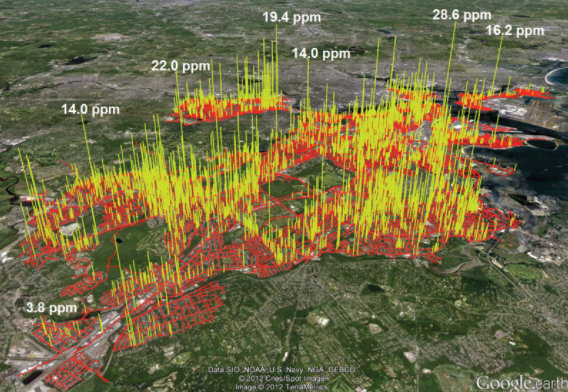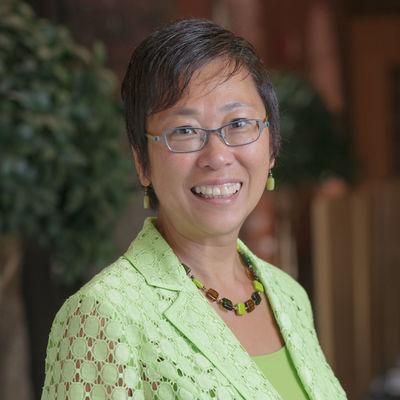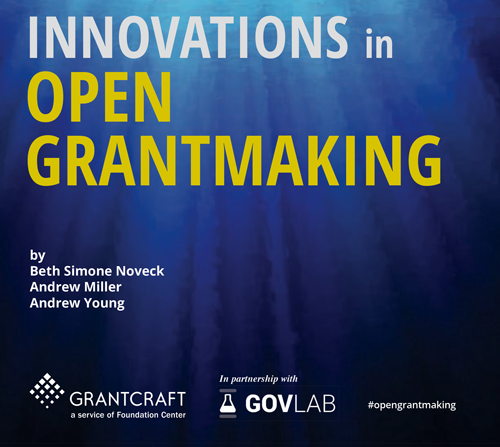When the Big Ideas are “Off Strategy”
How can funders be both strategy-focused and flexible? How can we be clear and consistent about our goals and priorities, but not risk missing big ideas that may not align perfectly with our assumptions of what the levers are?
Beginning in 2012, I invested some time on an idea that, at first, looked like a clear “no.” Since then, however, it has become an integral piece of how we and our partners spur our region towards a clean energy future.
In 2010, Barr developed a strategic plan for our climate change program that focused on the two largest sources of greenhouse gas emissions: buildings and transportation. Two years into working on this strategy, I received an invitation to hear a presentation about environmental research by Boston University (BU) professors. None of the topics seemed particularly on point to Barr’s new strategy. So, I passed. But as I looked into the presenters and their work, something caught my eye. One of the faculty members, Nathan Phillips, described his work as being focused on “urban metabolism.” It was a new term to me. Nathan defined it as the ebb and flow of greenhouse gas emissions in a city’s atmosphere. It struck me as a novel way to view the system (i.e., climate) we were trying to affect. I sent Nathan a note and asked for a meeting.
 A few weeks later, at Nathan’s lab at BU, he graciously shared his research. One project really made me stop and think. Nathan is a tree physiologist and was concerned about street trees dying off in and around Boston. He wondered if leaking methane might be the cause – as methane starves trees of oxygen. In addition to the risk of explosion, methane is a powerful greenhouse gas that drives climate change at a much faster rate than carbon dioxide. So, Nathan and a former utility gas inspector, Bob Ackley, rigged sensors to a car and did some initial ad hoc exploratory drives in the Boston area testing the air for methane from the underground natural gas pipes where they came across dozens of leaks.
A few weeks later, at Nathan’s lab at BU, he graciously shared his research. One project really made me stop and think. Nathan is a tree physiologist and was concerned about street trees dying off in and around Boston. He wondered if leaking methane might be the cause – as methane starves trees of oxygen. In addition to the risk of explosion, methane is a powerful greenhouse gas that drives climate change at a much faster rate than carbon dioxide. So, Nathan and a former utility gas inspector, Bob Ackley, rigged sensors to a car and did some initial ad hoc exploratory drives in the Boston area testing the air for methane from the underground natural gas pipes where they came across dozens of leaks.
Addressing methane wasn’t explicitly articulated in our strategy at Barr. But, depending on the scale, I thought, this could be a big deal...
Fast forward two years. What started as an off-hand, possibly off-strategy conversation became a major shift of strategy for Barr, and for many of our partners. Most significantly, it also resulted in state-level policy changes with enormous implications for our energy use and emissions.
How did this happen? In hindsight, five steps helped me follow my intuition, and invest in a big opportunity despite its first appearance in unexpected packaging:
First, ask a set of basic questions. Was it in our plan? In the case of methane, no. Was the government already doing something about it? Again, no. Had thought leaders identified it as a priority? Not yet. In fact, the conventional wisdom at the time was promoting natural gas as a “bridge fuel” that, while still a fossil fuel, would help us limit our coal and oil consumption. Was it a big problem? Maybe. Did the foundation have a role to play? Perhaps.
Second, check your gut. My gut said yes, this could be a game-changing issue worthy of our attention – or at least serious exploration. Our president, Jim Canales, often speaks of the importance of philanthropy balancing focus and flexibility, and of being “tight on goals but loose on how to achieve them.” Holding tightly to our goal of addressing climate change, it felt important to be loose about this potential new pathway.
Third, tap key networks. I asked my grantees and other partners for their input and advice. There was a general sense that methane leaks might be a big contributor to climate change, but not enough data existed to make it a priority.
Fourth, invest in research. One of Barr’s grantees, the Conservation Law Foundation, agreed to work with Nathan to research the extent of the problem and develop a menu of policy solutions. How did it compare to other actions already being taken in the fight against climate change?
Finally, release the findings to those who can use the results. The resulting publication, Into Thin Air, revealed that there were 3,300 leaks in Boston alone. It also estimated that the state lost more gas through leaks than it saved through its nation-leading energy efficiency programs. The Boston Globe and several other newspapers and radio stations covered the story. Soon, a network of organizations launched a grassroots organizing campaign. Some were Barr grantees. Others weren’t. A year later, the State Legislature unanimously passed a law requiring utilities to classify and repair leaks in a timely fashion. And addressing gas infrastructure is now a top priority for climate advocates across the region.
Our collective efforts in daylighting the leaks in the distribution system catalyzed a great deal of grassroots activism that was later channeled toward calling to question the large gas pipeline proposals that would bring fracked gas from Pennsylvania into New York and New England. Advocates were concerned that the region would become even more dependent on natural gas and jeopardize the region’s ability to reduce GHG emissions – while wasting significant amounts of gas that accelerate climate change.
At their best, strategies are a set of hypotheses, based on a moment in time, about what will bring about change. But times change. New ideas and partners emerge all the time, and often in unexpected ways. So, it is important to remain humble and open about what the right answers may be. Otherwise, we may miss some of the most powerful opportunities to achieve our goals.



